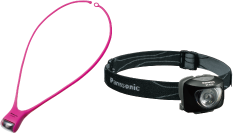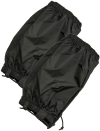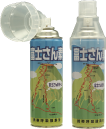In order to climb Mount Fuji safely and pleasantly, choosing tools and clothes is an important factor. First of all, prepare the required mountain-climbing equipment.
Shoes are one of the most important types of equipment for mountain climbing. Climbing shoes are different from your usual sneakers in the hardness of the soles and the depth of the grooves. Choose a stout pair that can endure long hours of walking. A light one using nylon that covers your ankles (middle-cut) is suited to Mount Fuji climbing. Soles should be hard so that you can walk easily on rocky areas near the summit. You will feel more secure with waterproof shoes because they can deal with a sudden climate change.

Knapsack for Mount Fuji climbing should ideally have a capacity of 25 to 35 liters. You will know that there is more luggage than you might expect after packing cold-weather wear, a water bottle, extra clothes in case of getting wet, accessories, etc. However, carrying everything you may need leads you to get exhausted easily, so try to put in only the necessary items. You will be secure by having a knapsack cover in case of rain, which protects your luggage from getting wet. They are available at mountain-climbing specialty shops.

The difference in temperature between the base and summit is about 20 degrees Celsius. Wind further lowers your sensory temperature. Shortly, they are almost different seasons. You will use cold-weather wear when staying in a hut or waiting for the sunrise at the summit rather than when walking. Take at least one piece of cold-weather wear, such as a thin down jacket, fleece wear, sweater, and jacket.
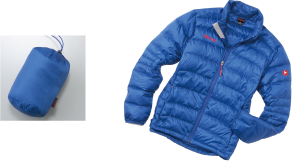
Because the weather tends to change easily in mountains, don't forget to carry rain gear. Separate suit wear (jacket and pants) is easier to move and convenient. Jackets are useful not only against rain but also as cold weather wear protecting your body from strong winds and low temperatures. Although ponchos are good as they can cover the knapsack, they are not recommended because you'll get wet in a strong wind.
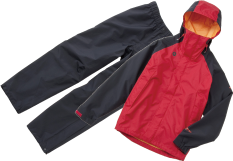
A hat/cap is necessary for provision against sunstroke. After passing through a forest zone from the trail entrance, you will come under the direct sun. As ultraviolet light is stronger than you might expect on a mountain, prepare one with a large brim. An elastic string is valued because it frequently gusts on Mount Fuji and your hat will be blown off. Specialty shops have clip-on elastics.
Prepare (work) gloves to prevent injury and to protect against the cold. They protect you from getting injured when falling down. You tend to forget them in summer, but they will be a help when climbing in rain or waiting for the sunrise at the summit. Gloves are one of the required pieces of equipment.
It's a necessary item unique to Mount Fuji climbing where you keep walking in the dark before dawn to see the sunrise. A headlamp is a climbers' light that has a band to put on your head so that you can use both hands. Their characteristics are being small, light, and bright and lasting a long time due to the LED light. Extra batteries should also be carried just in case.
